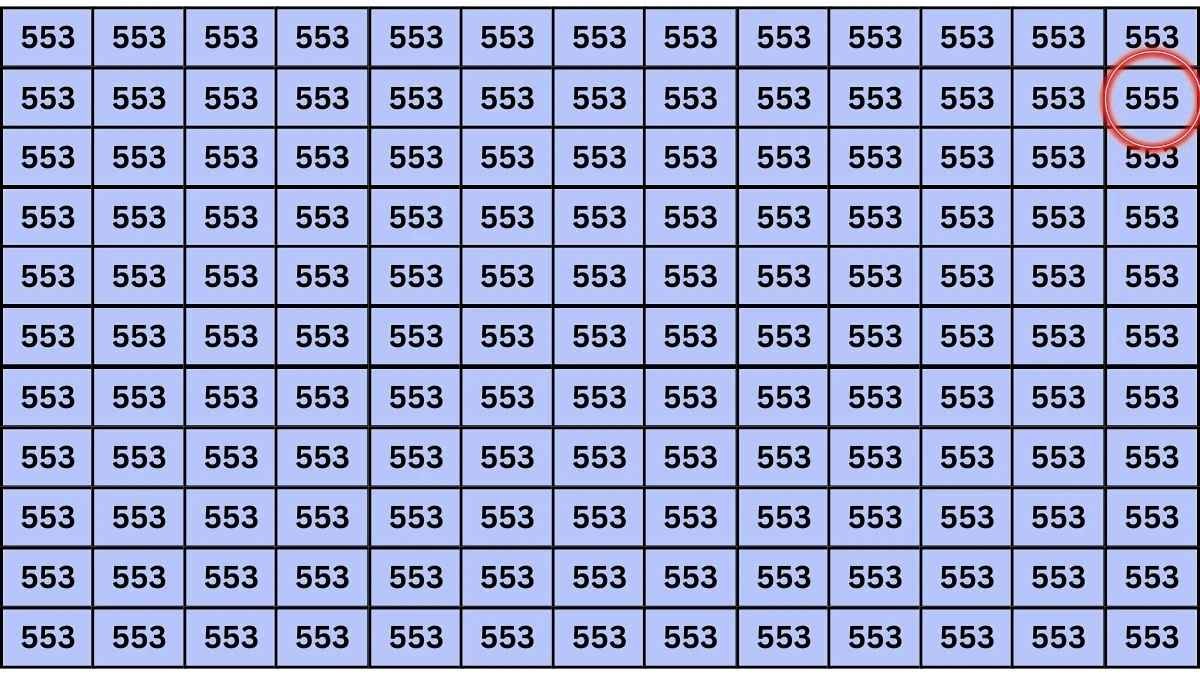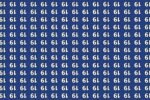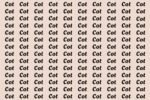We’ve all encountered those tricky visual puzzles online the ones that challenge your focus and test your ability to catch the smallest detail in a sea of distraction. One of the most popular and deceptively simple ones involves spotting the number 553 hidden among rows of 555s. At first glance, it seems impossible. Your eyes blur, your mind skips, and the pressure to find it in five seconds only adds to the tension. But with a few strategies and a fresh perspective, this puzzle becomes less about luck and more about skill.
Why Your Brain Struggles with Patterns
The brain is naturally wired to identify and follow patterns. It’s a survival mechanism that helps us process the world more efficiently. When you see the same number 555 repeated in a grid, your mind quickly assumes that all the numbers are the same. It glosses over the details in favor of confirming the pattern. This phenomenon, known as “change blindness,” means that subtle differences (like a 3 instead of a 5) are often missed entirely, especially when your brain has already settled into an expectation.
This is why the number 553 is so hard to spot. Even though the number is visually different, the contrast is small enough that your pattern-focused brain filters it out. The key to success is retraining your focus and breaking the mental autopilot that’s keeping you from seeing what’s right in front of you.
Training Your Eyes to See the Difference
Spotting the 553 in a sea of 555s requires intentional viewing. The first thing to do is slow down your initial scan. Though the challenge asks you to find the number in just five seconds, rushing actually makes it harder. Ironically, starting with a calm and centered approach helps you build the muscle memory for faster recognition later on.
Use your eyes like a scanner, moving methodically left to right, top to bottom, instead of letting your gaze randomly jump around the page. The number 553 usually blends in because the 3 looks similar to the 5 at a glance. But if you pay close attention to the curves and spacing of the digits, the subtle difference will stand out.
Mastering Peripheral Awareness
Another trick lies in training your peripheral vision. When your eyes focus on a central point, your peripheral vision still picks up visual data. With some practice, you can develop the ability to detect anomalies without directly looking at them. This is especially helpful in visual puzzles.
Next time you attempt the 553 challenge, try focusing on a spot near the center and allow your eyes to absorb the full layout. You’ll be surprised how your brain starts to notice something that doesn’t quite fit even if you’re not staring right at it.
Break the Pattern Visually
If the grid of 555s is presented in a structured format, try dividing the layout into smaller sections. Mentally break the whole into quadrants or rows and scan each one individually. This breaks the pattern repetition and forces your brain to reanalyze each section, making it more likely that the 553 will jump out at you.
This method is particularly useful if the 553 is tucked into a corner or edge, where your brain might not naturally look first. By scanning section by section, you increase the chances of catching the odd number hiding in plain sight.
Use Distractions to Your Advantage
Oddly enough, mild distractions can help you spot the difference. If you’ve been staring at a puzzle too long and your eyes have started to glaze over, take a short break or look away for a few seconds. When you return, the refreshed perspective might be all you need to notice the 553 immediately.
Another method is to squint slightly or zoom out if you’re on a screen. Changing the viewing angle or distance slightly alters how your brain processes the image, which can make the different number pop out more clearly.
Practice Makes Your Brain Sharper
Like anything else, finding hidden numbers among patterns is a skill that improves with practice. If this is something you enjoy or want to get better at, try similar puzzles regularly. The more you train your mind to see subtle differences, the faster you’ll become at solving them even within that five-second window.
Start with easier challenges and gradually move to more complex ones. Your eyes and brain will start to sync in unexpected ways, allowing you to pick out inconsistencies with greater ease.
The Psychology Behind the Fun
These kinds of visual puzzles tap into something deeper than just entertainment. They give you a sense of accomplishment, a dopamine hit when you finally crack the code. They’re also a way to momentarily disconnect from digital overload and engage the mind in a focused, meditative way. Even the challenge of “five seconds” creates a harmless tension that mimics real-life decision-making under pressure.
Understanding the psychology behind it makes the experience even more enjoyable. It’s not just about finding a number it’s about outsmarting your own mental shortcuts.
Final Thoughts on the 553 Puzzle
The next time someone shares the “find 553 among 555s” challenge with you, don’t panic. You now have the tools to approach it calmly, methodically, and successfully. It’s not about having perfect eyesight or lightning reflexes it’s about breaking patterns, training awareness, and knowing what to look for.
With practice and a little patience, five seconds will start to feel like more than enough. And once you master this one, who knows what other hidden puzzles you’ll be able to solve in a flash?




